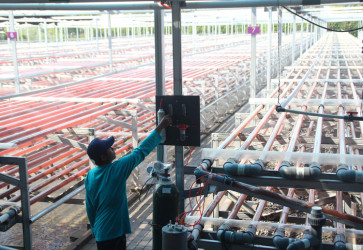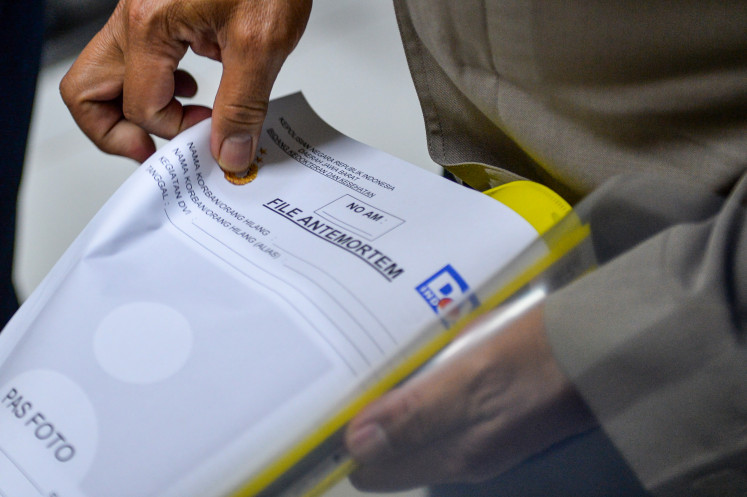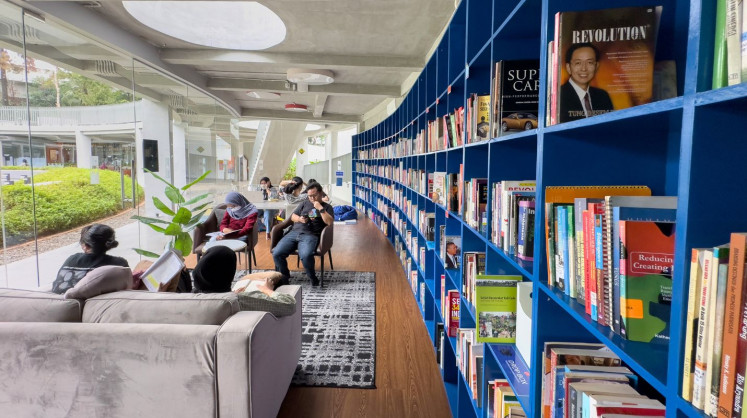RI Pavilion exceeds visitor target
One month before the end of the 2010 World Expo Shanghai, the Indonesia Pavilion has emerged as a visitor favorite
Change text size
Gift Premium Articles
to Anyone

O
ne month before the end of the 2010 World Expo Shanghai, the Indonesia Pavilion has emerged as a visitor favorite.
Competing with 192 other countries, Indonesia’s pavilion reflects the nation’s potential in a unique narrative.
“We have to acknowledge that the Indonesia Pavilion has provided great benefits, because it has effectively voiced the positive aspects of our people,” Coordinating Economic Minister Hatta Rajasa told journalists at his office in Jakarta on Monday.
By visiting the pavilion, visitors acquired a clearer picture on how the Indonesian economy was strengthening and how its people preserved the country’s unity in diversity through hard work, he said,
The government initially set a target of 3 million visitors for the six-month event, but the pavilion attracted 1 million visitors in the first month alone. A revised target of 5 million visitors was exceeded on Aug. 17, just in time to commemorate Indonesia’s 65th Independence Day.
Three weeks later, the 6-millionth visitor was greeted on Sept. 11, just in time for Idul Fitri festivities.
According to the Trade Ministry, visitors at the pavilion comprised almost 12 percent of the total visitors to the 2010 World Expo, which began on May 1.
“It’s very high,” Trade Minister Mari Elka Pangestu told journalists.
The number of visitors exceeded the initial target of 3 million, and even the revised target of 5 million set by the Coordinating Economic Minister, Mari said.
The Indonesia Pavilion received positive comments from visitors who liked its unique bamboo interior, delicious food and the hospitality of its hosts, she added.
Indonesia’s pavilion at the World Expo contributed to the government’s efforts in strengthening trade between Indonesia and China, Mari said.
“[The pavilion] helps accelerate the distribution of Indonesian products in China by registering both the products and brands of the pavilion’s business counterparts with Chinese trade offices,” she said, adding that Indonesian businesses might increase exports to China by using such facilities.
China’s strengthening economy represents a golden opportunity for Indonesian business players to boost their trade, she said.
Trade ministry data shows that trade between the two countries increased from US$12 billion to $30 billion in the past five years.
“China is one of Indonesia’s most important trade partners. It is also the main export destination of Indonesian products, especially for the mining, agricultural and industrial sectors,” Mari said.
In promoting investment opportunities in Indonesia, the Indonesia Pavilion emerged as a “window” to showcase the country’s potential, she said.
Visitors are also given Pongo and Koko pins, representing the orangutan and komodo, making the pins collectible items pursued by visitors and attendants from other pavilions, Mari said.
Another Indonesia icon was nasi goreng (fried rice), with more than 67,000 portions served to customers so far.
President Susilo Bambang Yudhoyono and Vice President Boediono are expected to visit the pavilion in October. The expo closes on Oct. 31. (ebf)









